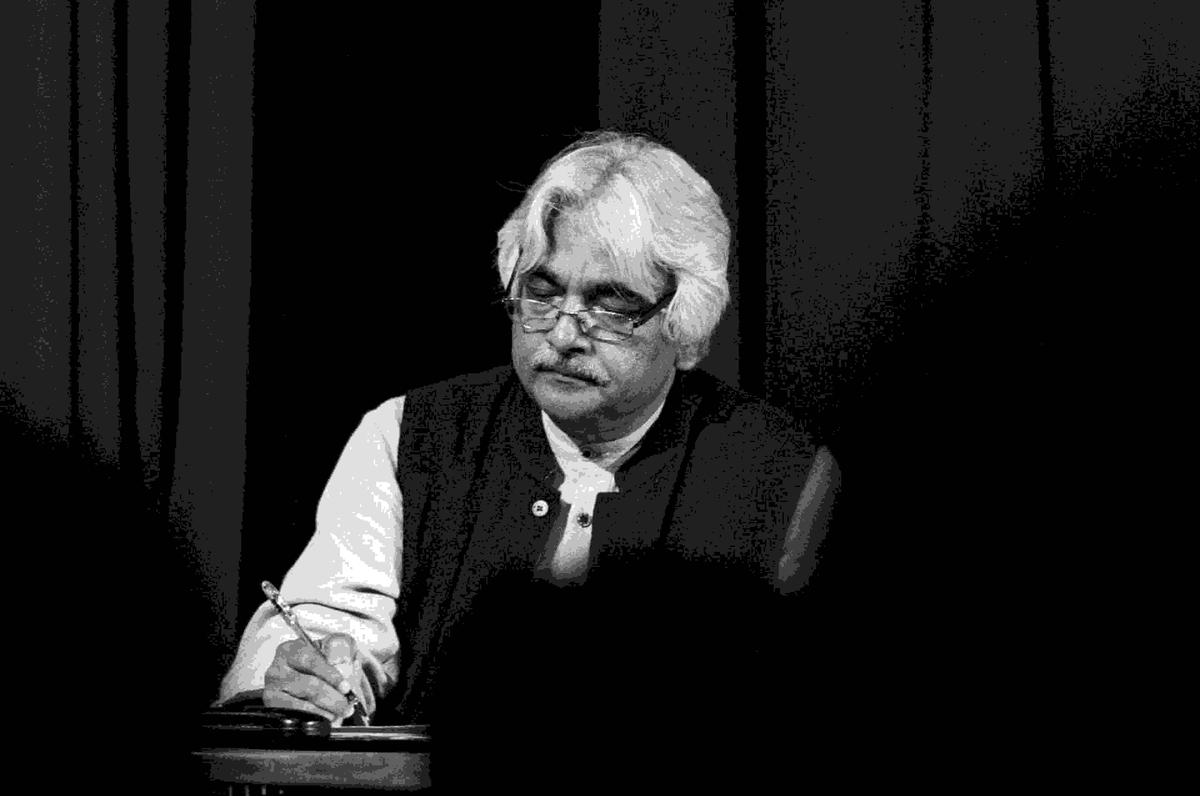From ‘Mandala’
| Photo Credit: Special Arrangement
As the light hits the stage, it’s covered in hues of aquamarine. The dancers, dressed in white and red, enter, each one embodying aspects of the Tibetan sand mandala. In the wings, stands Lata Pada looking contemplative. She is presenting ‘Mandala’ after a three-year hiatus. And this time, it’s spreading its wings across India.
“Mandala is drawn from my understanding of the Sri Chakra as sacred geometry — a symbolic manifestation of the universe. Each I have learnt, is potent with deep meaning as a pathway to end the cycle of ignorance and suffering,” she explains.
As the fourth major tour presented by her Toronto-based dance academy, Sampradaya Dance Creations, it’s also their shortest production yet, with a runtime of only an hour. But the meaning, she says, runs deep, with roots in Adi Shankaracharya’s magnum opus, Soundarya Lahiri.
“The text’s detailed description of the arrangement of the Yantra was such a gift in planing our choreography, and later chapters provided strong visual guides in imaging Devi and Shiva in separate and androgynous forms,” she says.
Collaborative
Created in conjunction with Lata’s successor and Sampradaya’s current artistic director, Suma Nair, the production was conceptualised during the Academy’s 30th anniversary celebration in 2018. The real work, however, began this September, when the two joined forces to assemble the best talents. “Each dancer, from the five Bharatanatyam artistes to the three Kathak dancers, have brought so much in the process of improvisation to the stage, that choreography has been truly collaborative,” she says.
With a musical score composed by Bengaluru-based Praveen D. Rao, the production integrates both Carnatic and Hindustani musical forms, and is bolstered by projected visuals created by French-Canadian Jacques Collin.
The collation and large-scale scaling is a first of its kind for Sampradaya, but the challenge, Lata says, began in the stages of research, delving into texts to understand the common philosophy, design, and spiritual underpinnings of the Mandala and Sri Chakra.
“Despite the grandeur of meaning and esoterism of the subjects, we took their profound meditative design descriptions as they create their mandala as a form of ritual meditation, consecration, and ultimate sacrifice for the betterment of humanity.”
While conducting their research, both Lata and Suma met with Tibetan monks from Toronto’s Palyul Pema Mani Centre, toying with the possibility of them creating a sand mandala at the Mississauga’s Art Gallery as a special week-long installation for public viewing.
An homage to her gurus, Kalyanasundaram and Kalanidhi Narayanan, Lata has attempted to infuse both lessons and productions with everything from Kallari and contemporary dance to Butoh, improvisation techniques, and the like, reflecting her own immigrant experience while paying tribute to the land and beliefs she holds dear.
“We love performing in India, simply because the audiences are always ready and eager to watch something new. This curiosity is what keeps us going,” she says with a smile.
Mandala will be performed on December 24 (6 p.m.) at Bharatiya Vidya Bhavan






